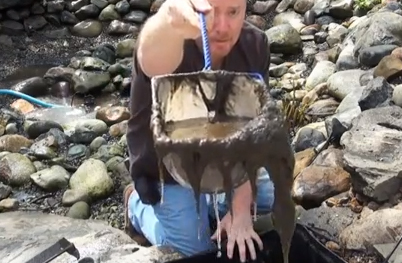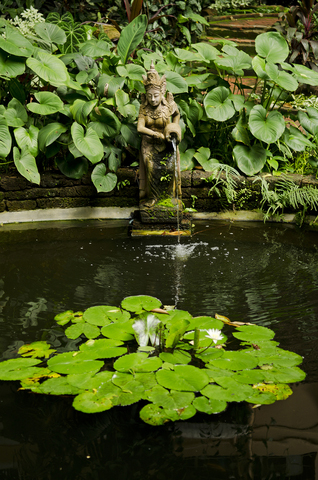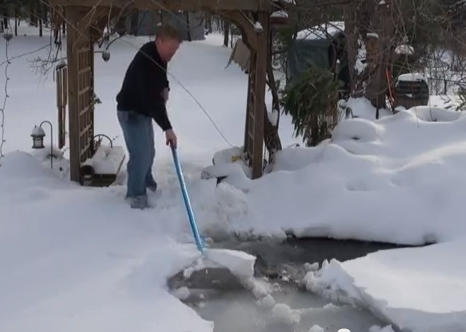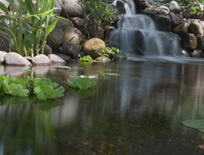pond maintenance
Pond ownership comes with a range of responsibilities, not the least of which has to do with making certain everything is ship-shape at some point before the weather gets very warm in the spring. That’s particularly true if the pond carries a good population of
More and more people are enjoying the way ponds and watergardens help them keep in touch with nature, enjoy tranquility and slip into peaceful reflection. But these watershapes are small ecosystems and can pose a range of challenges – some of them, as we shall explore here, related to maintaining proper water levels. The average pond can lose its water in a number of ways, anything from small leaks or wicking from waterfalls to evaporation or small animals taking their share. Pond professionals and pond owners all know this, of course, but most rely on manual refilling methods – that is, a bucket or a nearby garden hose – instead of devising more elaborate filling systems. To be sure, the classic manual methods are tried and true, but some have
I wouldn’t mind being able to hibernate through the coldest part of winter, but as a professional in the pond business, I know I’ll be spending some time out in the cold helping see my clients’ watergardens through the worst of winter’s chill. Fortunately, there’s really not a whole lot to be done – the plants are dormant, the fish are quiet, and the systems
At the start, a large number of ponds are all about the fish. From the planning stages through to completion, the goal is to create an environment in which koi and other beautiful specimens will thrive in an environment that is both balanced and self-sustaining. There’s a lot that goes into making these miniature ecosystems work, from good circulation and filtration systems to including places where the fish can retreat from the sun and predators. But when all is said and done, the key to achieving ongoing, sustainable balance has less to do with technology than it does with Mother Nature and
In this series of occasional newsletter articles, the staff at Aquascape — a waterfeature design and installation company headquartered in St. Charles, Ill. — will offer information, advice and tips on creating and maintaining quality ponds, streams, waterfalls and pondless waterfeatures. Along the way, the coverage will range from the very basic — the sort of information you can use in training new staff and helping your clients — to the very advanced. To get things started, here's
If there’s one thing all ponds and lakes have in common (beyond the obvious fact that they all contain water), it’s that they’re as different as snowflakes – highly idiosyncratic, often challenging and sometimes almost willful in the way they resist being manipulated. For the past 35 years, we at Diversified Waterscapes (Laguna Niguel, Calif.) have just about seen it all as specialists in maintaining man-made ponds and lakes and in remediating those that have fallen on hard times and suffer with severe problems. We’ve found that every situation is different and that figuring out what’s going on involves the evaluation of countless variables – some obvious and easy to read, others less so. For all that, our experience tells us that the serviceability and sustainability of ponds and lakes is for the most part determined long before we come on the scene – even before they are filled with water. When they’ve been designed and installed with a few key principles in mind, we find them to be cooperative and affordably manageable. If a few of the more common mistakes are made, however, it’s a completely different and far nastier
For a long time, I've studied a small lake that formed long ago in a natural bowl in Northern Wisconsin. It has about 20 acres of surface area and is now surrounded by a cow pasture and a cornfield. Holsteins graze right up to the water's edge and at times step into the lake to drink. Sometimes, cows being cows, their waste ends up in the water as well. On the opposite shore, the cornfield has an unusual configuration, with its furrows running straight down the slope and into the lake. When it rains or the fields are irrigated, some fertilizer inevitably washes into the lake. The stage is set for aquatic misery: Viscous, pea-soup mats of green algae and foul odors are the common results of this sort of nutrient loading. Indeed, few life forms other than algae survive in



















